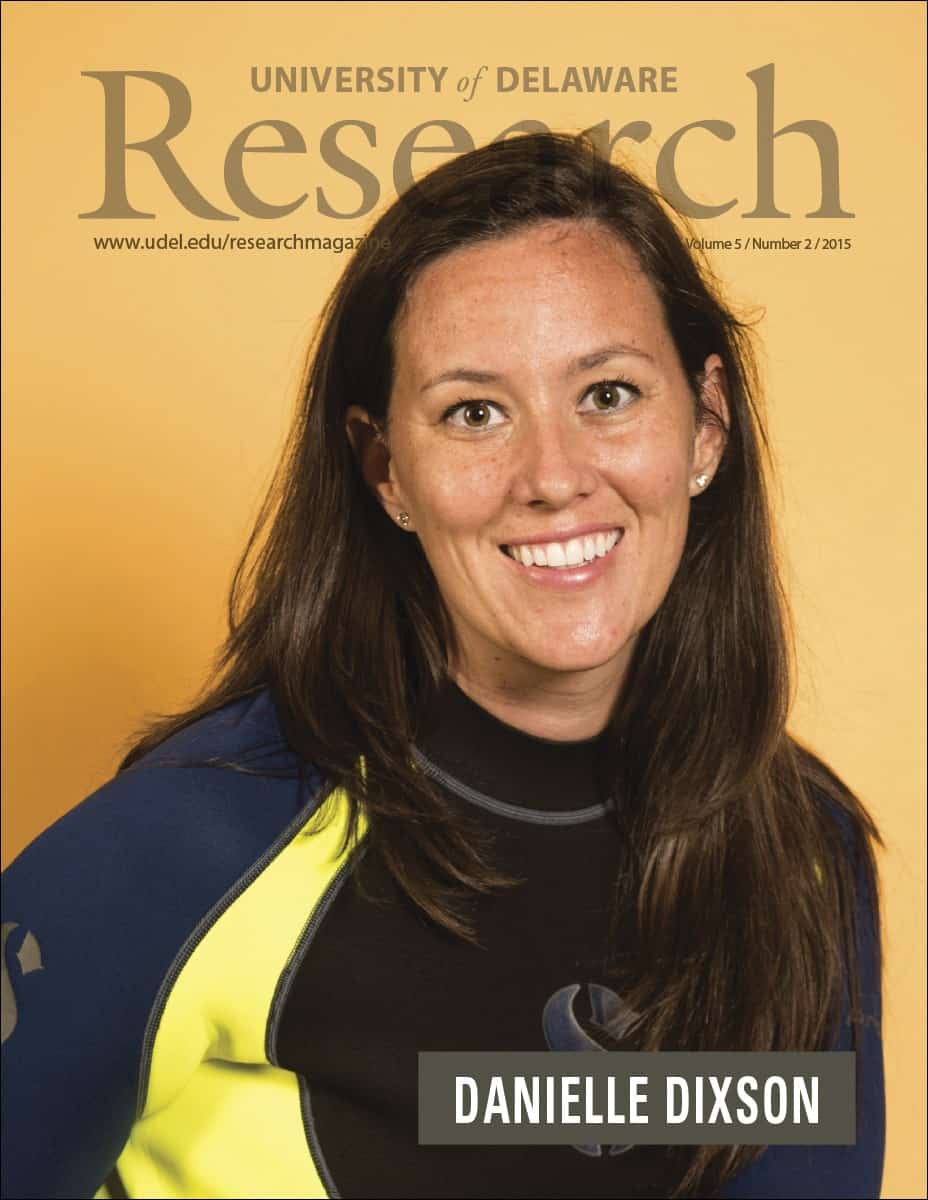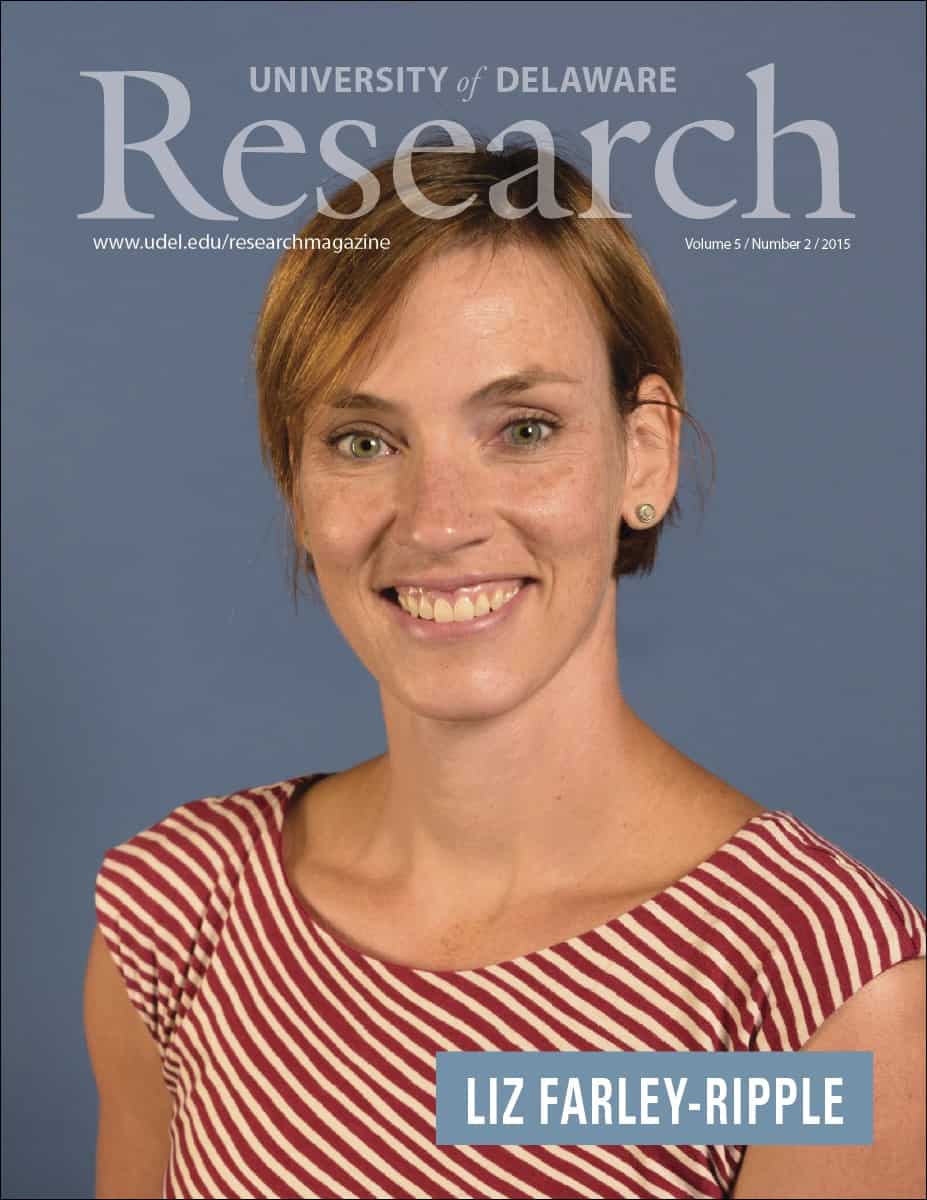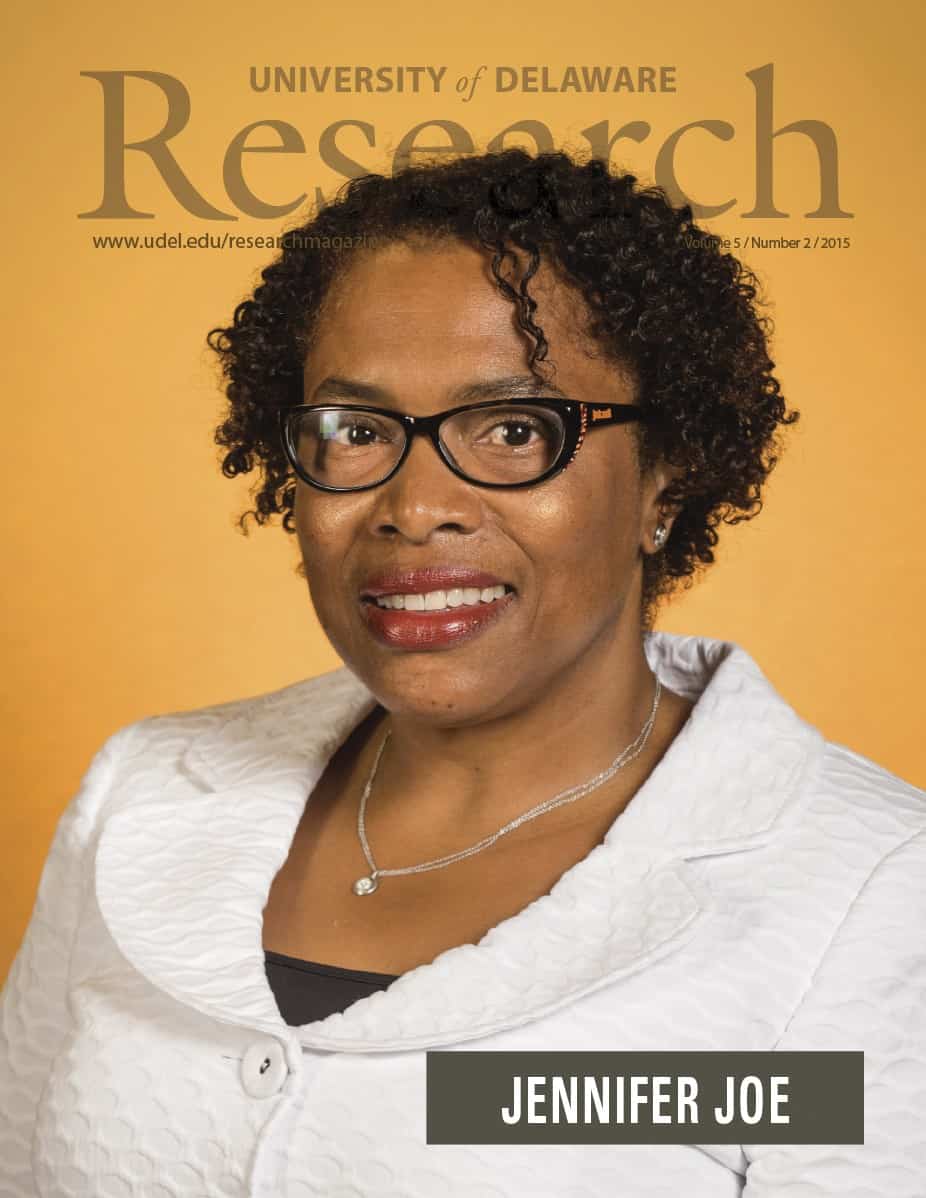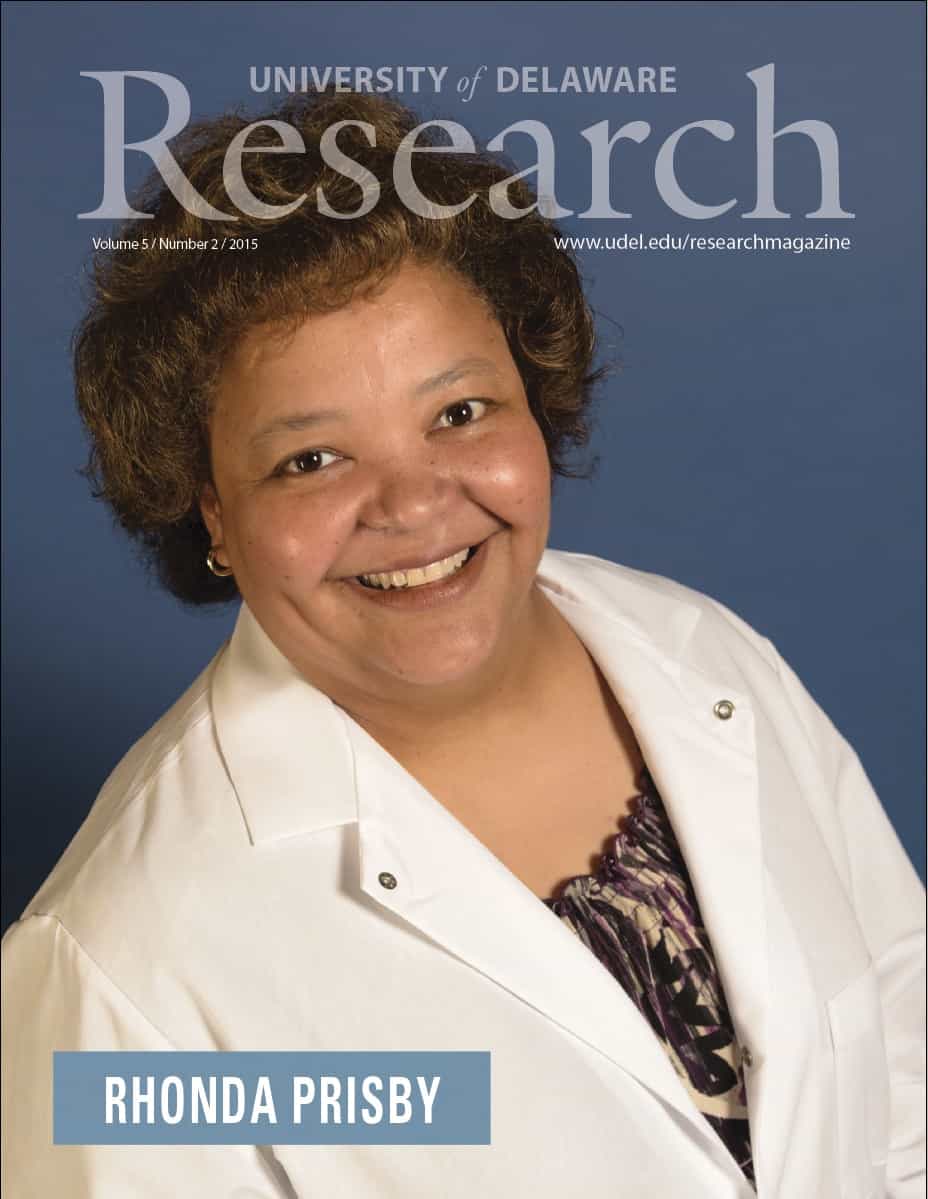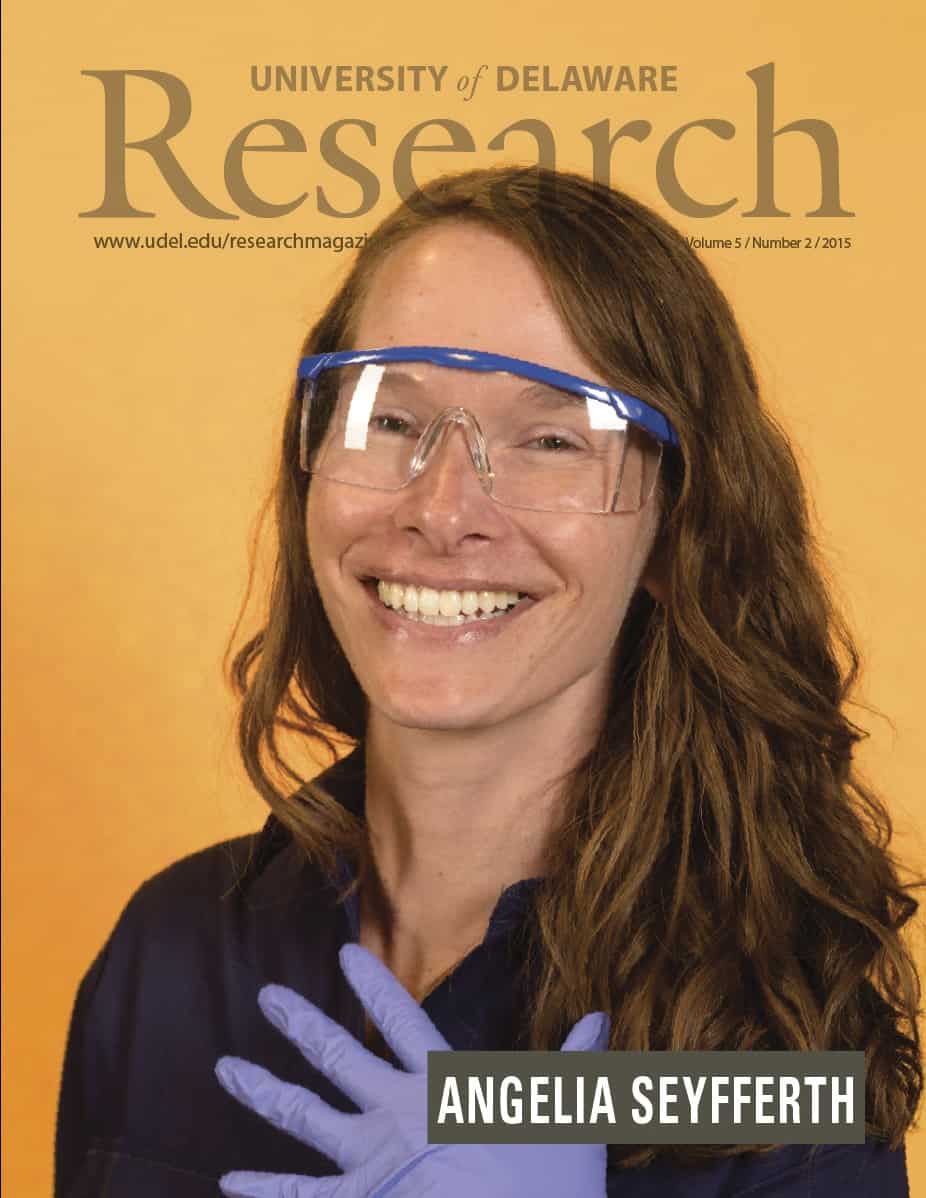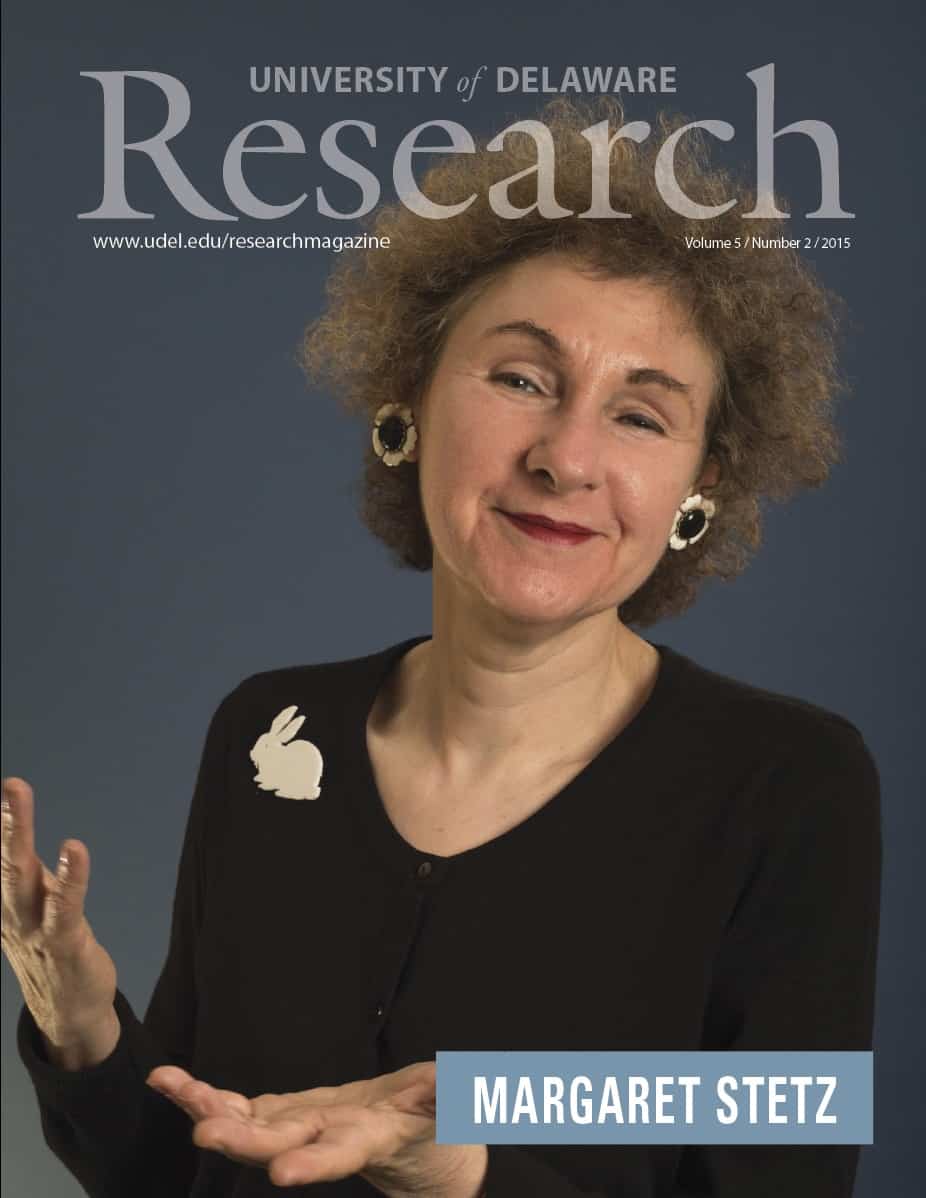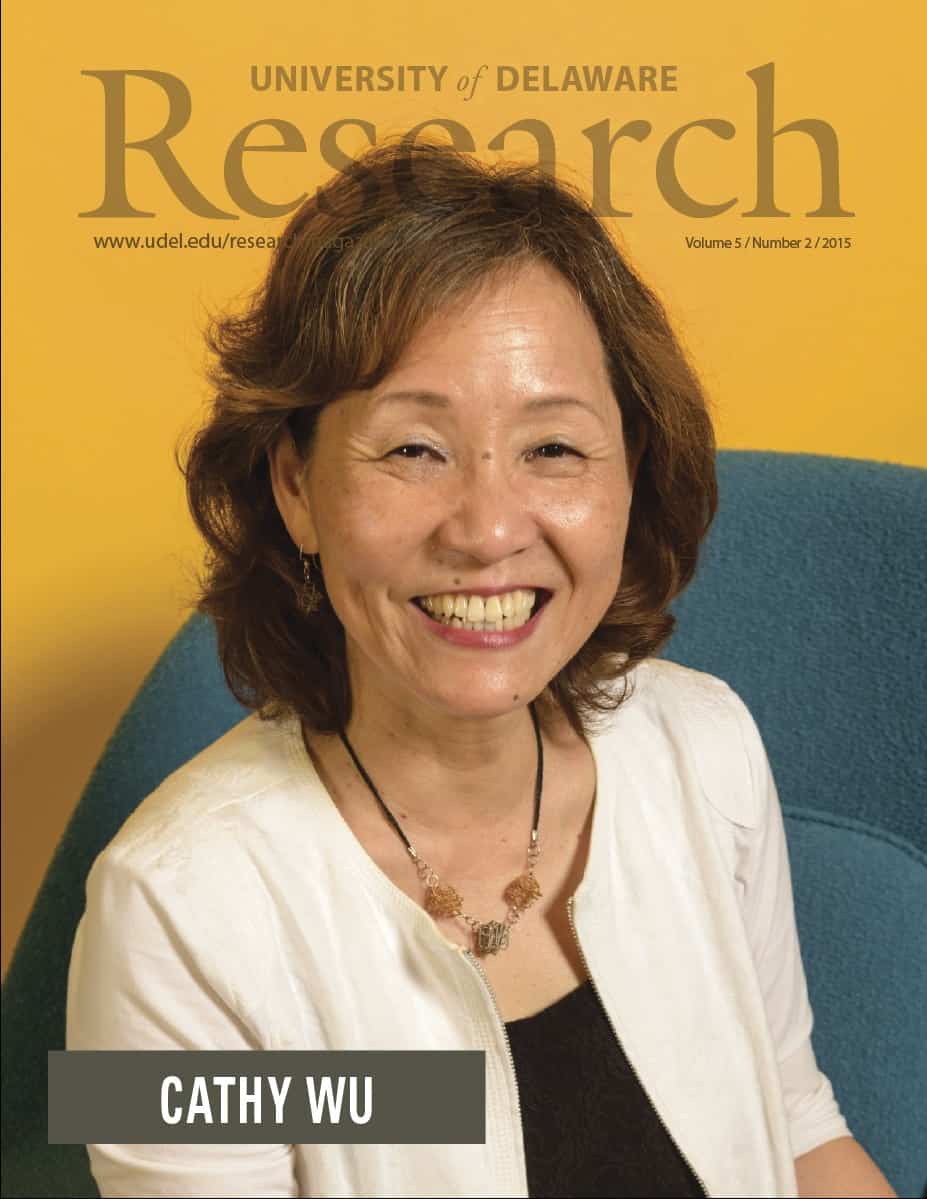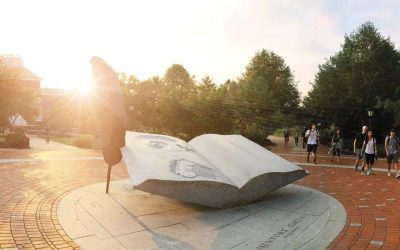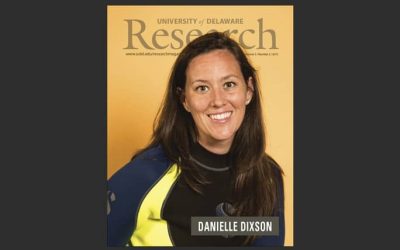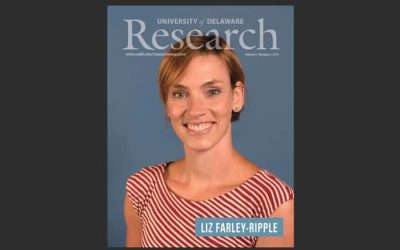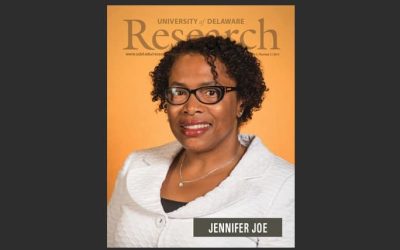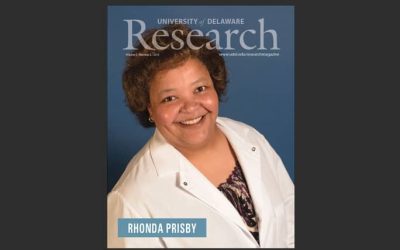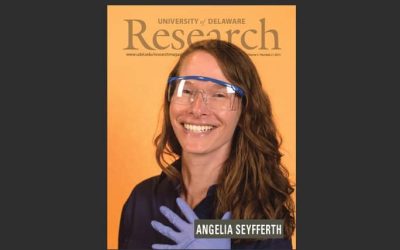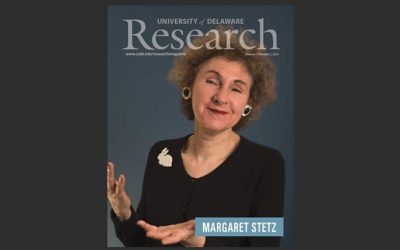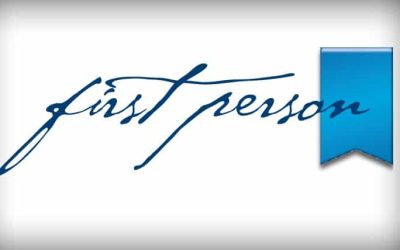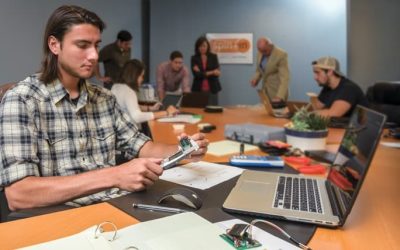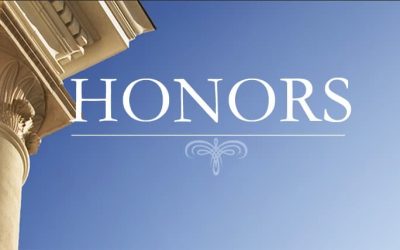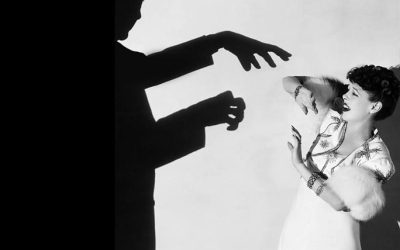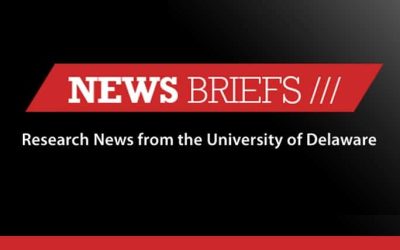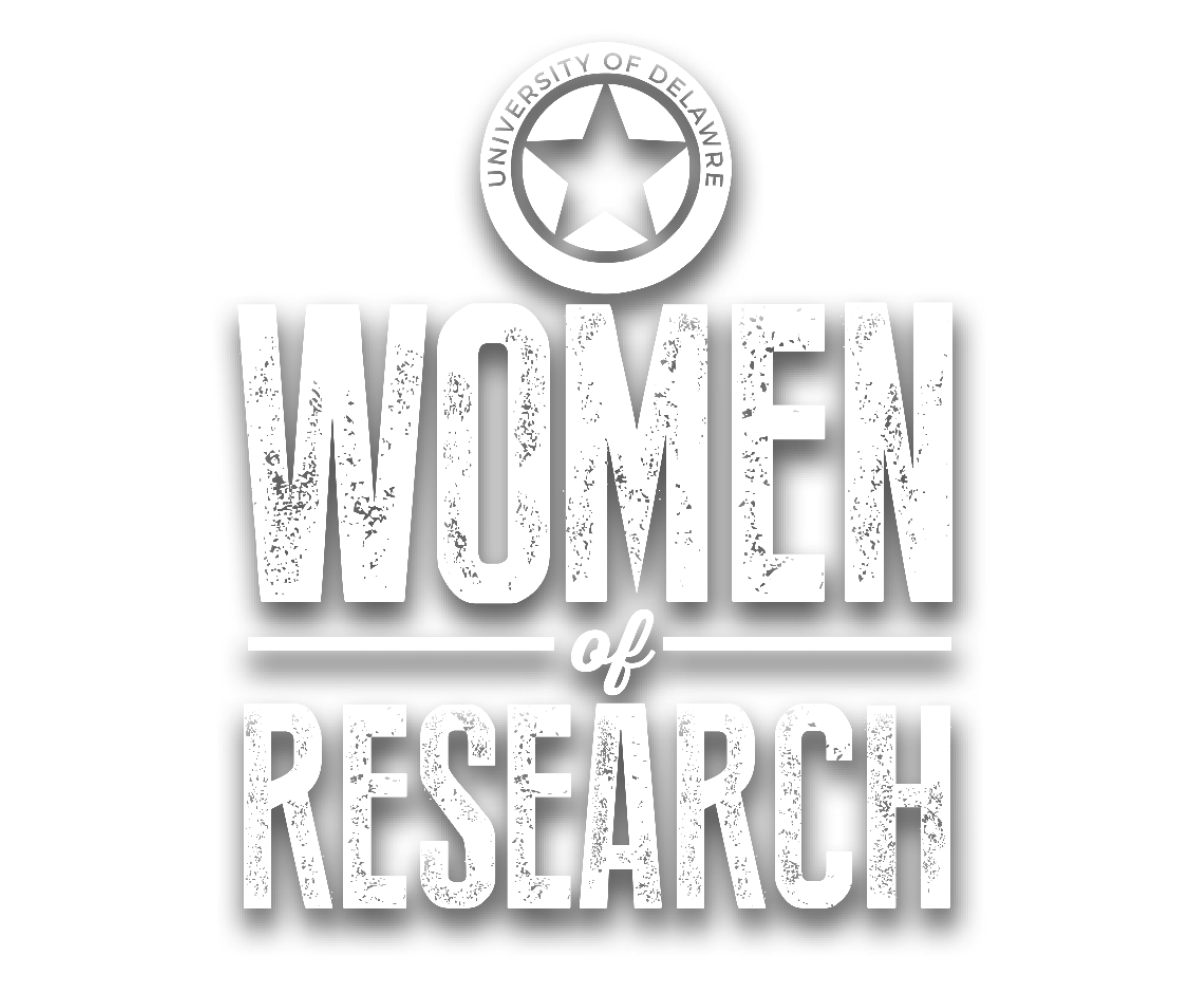
E extraordinary research is underway at the University of Delaware, and women are all over it— exploring everything from big data to nanomaterials, microbes, catalysis, the bottom of the ocean, cultural artifacts around the world, the way people communicate and the roots of faraway objects in the solar system.
Here, seven UD researchers and a celebrated mentor offer insight into the breadth and promise of their work, what inspires them, what has hindered them, what keeps them going.
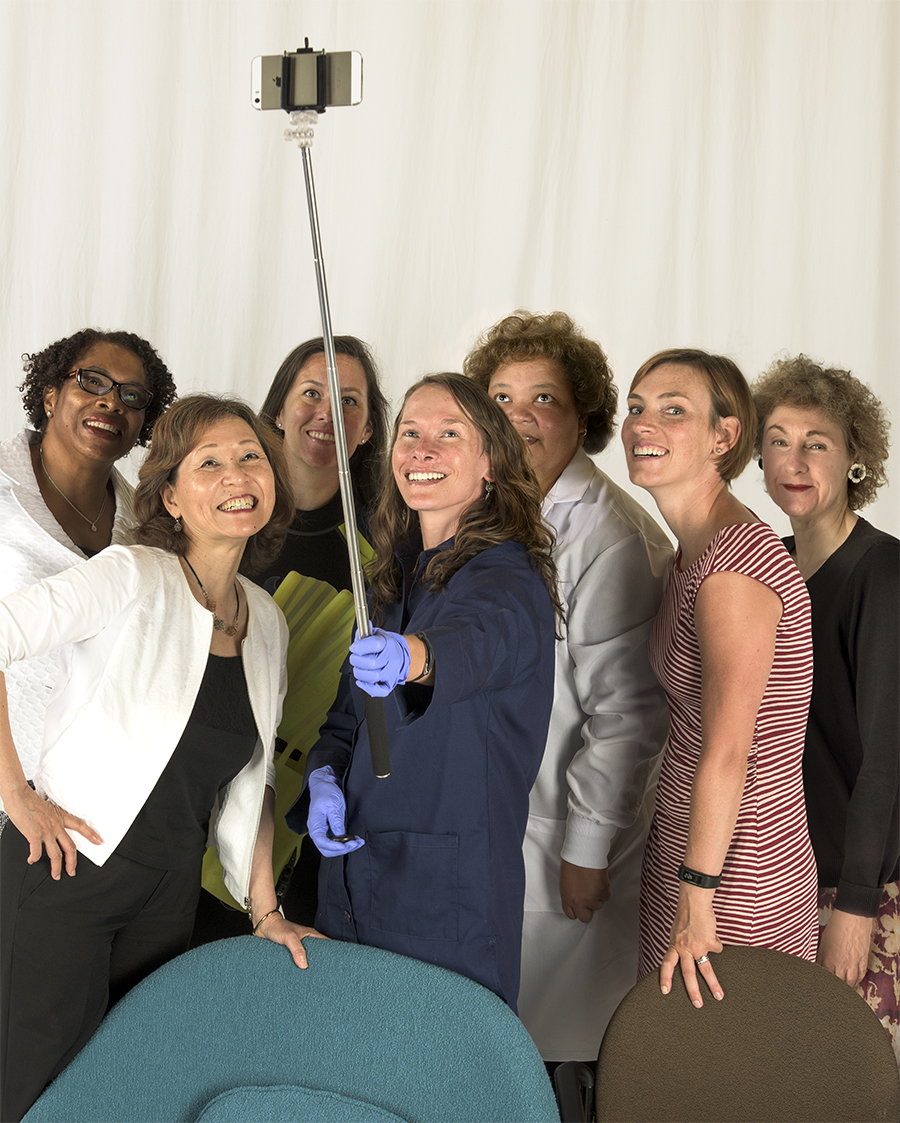
RESEARCH PROFILES
Extraordinary research is underway at the University of Delaware, and women are all over it. We profile seven researchers who offer insight into their work—from coral reefs to corporations—what hurdles they have cleared and what keeps them moving forward.
Select a researcher above to learn more about her.

Women of Research
Many will note that the quest for greater gender balance in the laboratory, the social sciences and the disciplines that fuel the so-called STEM fields—science, technology, engineering and mathematics—is not a mission accomplished. But neither is it mission impossible.
Quite the contrary, says a $3.3 million, five-year transformation grant from the National Science Foundation, which expects that investment to produce sustainable dividends institution-wide. The money supports UD ADVANCE IT (Institutional Transformation), a project designed to increase the number of women in faculty and leadership positions throughout the University, with special focus on STEM and social sciences.
A snapshot of University statistics points to long-standing deficits in the percentage of women faculty in STEM fields and leadership roles—gaps that are common across the nation and around the world. But the same data—explored over time—point to incremental gains here.
SOURCE: UD Facts & Figures 2014-15
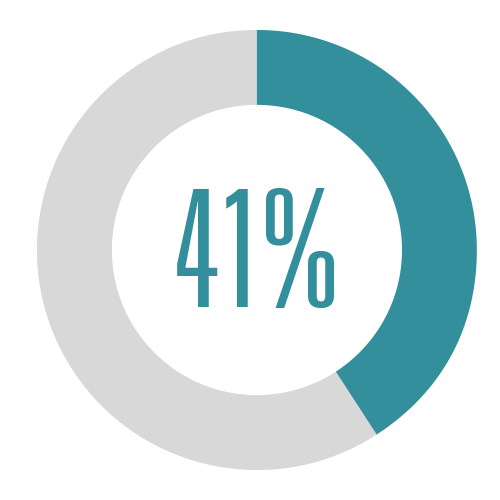
UD faculty positions held by women during 2014-15 academic year.
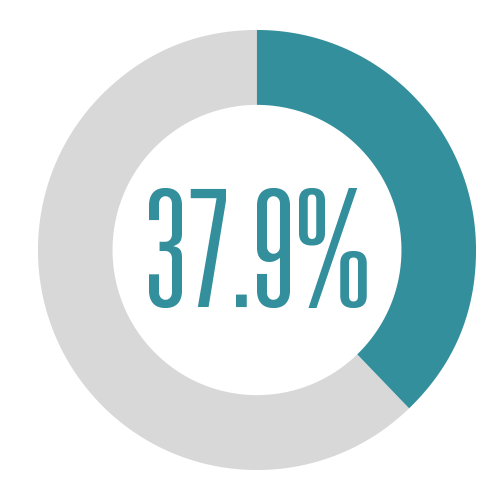
Administrative appointments held by full-time tenured/tenured-track women faculty.
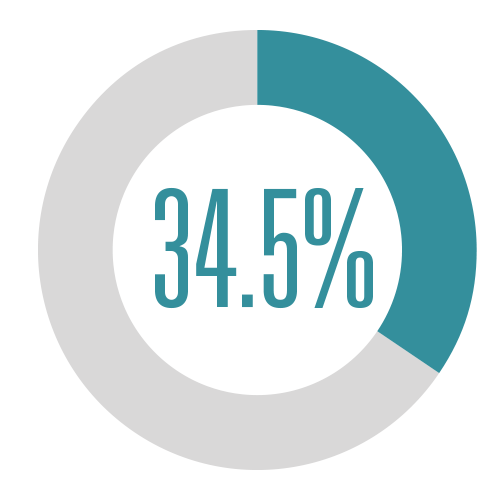
Chairperson/academic center director positions held by women faculty.
Women held just 5 percent of UD’s engineering faculty positions in 2001, for example. By 2006, that percentage had increased to 13 percent. Nationally, during the same time frame, women inched ahead from 9 percent in 2001 to 11 percent in 2006. Last year at UD, meanwhile, the percentage was up to 17 percent, according to Pamela Cook, Unidel Professor of Mathematical Sciences and a principal investigator in UD’s ADVANCE work.
Cook is no stranger to such discrepancies. When she started at UCLA, she was the lone woman with 72 male colleagues. When she arrived at UD, she stepped into a department as the only woman among 37 male colleagues. But she later became the first female chair of a STEM department at UD.
“It is changing,” she said. “The University has family-friendly policies now. But day-to-day life depends a lot on your chair.”
And on your approach, Carolyn Thoroughgood would say. Thoroughgood, professor in the School of Marine Science and Policy and chair of the board of the Mid-Atlantic Regional Association Coastal Ocean Observing System (MARACOOS), has preferred not to focus on signs of gender discrimination, though she has addressed it quite forcefully in the past.
“I would go to meetings where I was the only woman there,” she said. “It didn’t take long, though, before that was forgotten.”
That’s not to say she didn’t see problems—and address them. She often was in a unique position to do so, too, for though her career started in research it morphed into leadership roles, where she was able to facilitate the research of others.
She remembers when—as a dean—she discovered a problem facing a capable young researcher who was applying for promotion to associate professor with tenure.
“Just before she applied for promotion, she gave birth to twins,” Thoroughgood said. “One of her external reviewers … was asked by the P and T Committee to write a letter of evaluation of the contributions of her research and scholarship to the field of oceanography. This reviewer wrote a glowing letter of support until the final paragraph. He concluded the letter by saying that since she was now a mother of twins, he did not see how she could be a good mother and keep up with her academic responsibilities, especially her research.
“I was furious when I read the letter—it was blatant sexism—so I called his dean and made him aware of the letter. This dean (from one of the oldest oceanography programs in the country) took appropriate actions at his institution, and the P and T committee and I agreed to throw the letter out. The assistant professor was promoted with ease and has continued to have a very productive research career in oceanography.”
Thoroughgood wouldn’t play the doormat or the victim. She simply addressed the problem. Her refusal to take up a campaign wasn’t always appreciated by other women. But that was her way.
“Were there times I could see improper behavior? You bet,” Thoroughgood said. “I saw it and I heard about it…. But we’re here together to work as a team. I am not going to say we are disadvantaged, need special help or need only women mentors. I would find that perspective crippling. It is more important to focus on maximizing the abilities one has.”
Plenty of women—some of whom are still on active duty—can recall much less enlightened days when a female faculty member with a Ph.D. might be assigned to teach 8 a.m. classes six days a week, tagged as a house mother for female students, required to live on campus if she was unmarried and forced to choose between building a family and meeting the deadlines of the tenure track.
The University has made significant policy changes—including the “Stop the Clock” initiative that gives tenure-track faculty an extra year in the tenure process if they need to take family leave for the birth of a child. That extension can be made twice in what is normally a six-year process.
And the University’s recently adopted strategic plan—known as Delaware Will Shine—underlines UD’s commitment to increased and sustained diversity as a cornerstone of all future endeavors.
The ADVANCE project, which is written into that strategic plan, has many strategies to support change, raise awareness of such things as unconscious bias, improve the “microclimate” for women, point to what is working elsewhere, clarify policies and monitor University data, and facilitate conversations about diversity. The project, which is based on research, has a research program of its own that will contribute data and analysis to a growing body of literature on organizational change and the advancement of women.
Of course some still shrug when they hear the word “diversity,” dismissing it as a useless and wearisome exercise in political correctness.
Rhonda Prisby, associate professor of kinesiology and applied physiology, says that reaction usually emerges from those already in a position of influence and/or power.
“Having a diverse group matters,” she said. “You don’t think the same way. You bring new experience to the table if you’re different…. You have to have women out there in front.”
Four principal investigators lead the ADVANCE effort—including Cook, John Sawyer, professor of management and associate provost of institutional research and effectiveness, Heather Doty, a physicist and assistant professor of mechanical engineering, and Robin Andreasan, a philosopher and associate professor of linguistics and cognitive science.
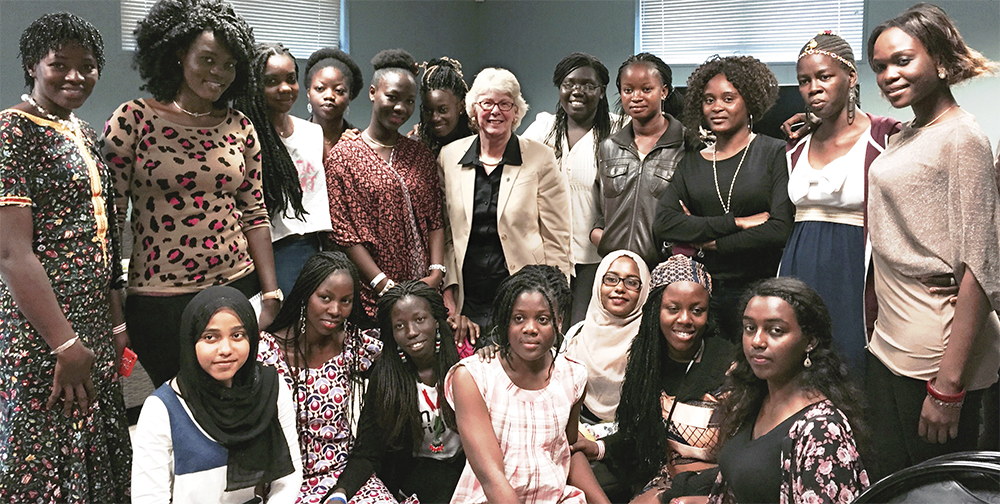
UD Acting President Nancy Targett (center) met with these young women from Sub Saharan Africa as part of the Study of the United States Institute, a State Department program held at UD this past summer to develop leadership skills.
They enjoy support in high places, including Acting President Nancy Targett, who has been a strong proponent throughout the ADVANCE initiatives, Provost Domenico Grasso and Deputy Provost for Research and Scholarship Charles Riordan, to name a few.
In his letter of endorsement to NSF, Grasso wrote: “I am aware that UD has been historically slow in diversifying the faculty not only in gender but particularly with respect to underrepresented minority faculty (URM). But history is not destiny!”
Grasso, who was the founding director of the engineering program at Smith College, said he is committed to advancing women in STEM fields and lending “the weight of my office” to assure that recruiting and retaining women faculty from underrepresented minority groups is one of the deans’ top priorities.
Riordan said his work with the ADVANCE program since 2008 “has been one of the true pleasures of my career. I have learned much about the impact of implicit (and explicit) bias, stereotyping and isolation on faculty success and importantly, understand the practical strategies to mitigate against these behaviors to ensure better outcomes in hiring and retention. In the next few years, I look forward to seeing ADVANCE fully integrated and sustained as a key program central to UD’s success.”
It is not a stretch to say that women and women of color are sure to have greater representation and increasing support in research at the University of Delaware, producing who-knows-what kind of advances that might otherwise go unimagined.
“Our long-term goal is to sustain this work beyond the NSF years,” Doty said.

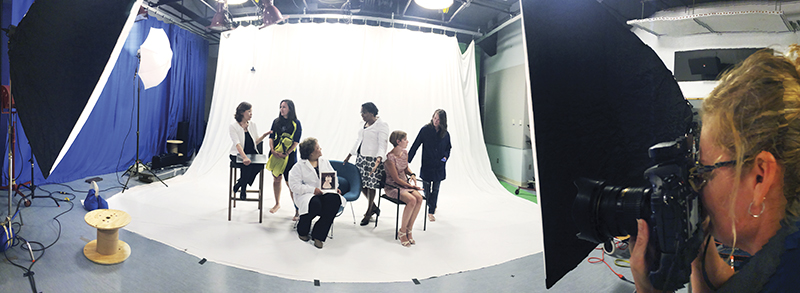
Behind the Lens
Senior photographer Kathy F. Atkinson (right) worked her magic in a special shoot for our “Women of Research” feature. All of the researchers were comfortable, accomplished and cooperative, she said—a trifecta professional shooters don’t always experience. But these women “really got into it,” said Atkinson, who has been on UD’s staff for 15 years. “And though they may not have known each other coming in, hopefully they left as friends.”
Activities already planned under UD’s ADVANCE grant from the National Science Foundation include:
- Bi-annual faculty satisfaction survey
- Networking and educational support for department chairs and upper administrators
- National research conference on “Women of Color in the Academy”
- Provost walkabouts, which will bring the provost to all colleges during the grant years
- Enhanced mentoring for associate professors and faculty of color
- Annual “Promotion and Tenure” workshops for tenure-track faculty; “Promotion to Full” workshops for associate professors; “Advancing to Leadership” workshops for full professors
- Mini-grants for faculty development
- Policies and procedures review
- Collection and enhanced presentation and dissemination of faculty demographics data

Pamela Cook (third from right), principal investigator, is shown with the ADVANCE team. The team includes the co-principal investigators, John Sawyer, Heather Doty and Robin Andreasen, and the director, Emily Bonistall Postel. Other members of the team include Jawanza Keita, Lynn McDowell, Shawna Vican and Joan Buttram.
Women made up 41% of UD’s faculty during 2014-15. — UD Facts and Figures
MORE STORIES
ADVANCE-ing UD
Seven faculty members are highlighted in this issue of UD Research. Indeed, there are commonalities among them—a steadfast commitment to excellence, unrelenting intellectual curiosity, mentors and role models who inspire, and a disdain for the status quo. I encourage you to read their stories to learn about their inspirations, the challenges they have faced and the scope and quality of their scholarly endeavors.
Danielle Dixson
A chance encounter with a tour guide at the Shedd Aquarium in Chicago is what sparked Minnesota native Danielle Dixson’s interest in marine biology. “I was 5 years old and the guide gave me a book for asking a clever question about whales,” she says.
Liz Farley-Ripple
Elizabeth Farley-Ripple did not set out to become an education researcher. As an undergraduate at Georgetown University, she started out majoring in Latin American Studies. Then came Professor Bill McDonald’s sociology course focusing on research methods. “I had an aha moment,” says Farley-Ripple. “I realized I could have an impact—and actually apply the ideas I had been reading about.”
Jennifer Joe
Jennifer Joe, the Whitney Family Professor of Accounting in the Alfred Lerner College of Business and Economics, attributes positive experiences with her professors in college as the impetus for her pursuit of an academic career.
Rhonda Prisby
Rhonda Prisby had a plan for her master’s degree in exercise physiology. She expected to work in a cardiac rehabilitation clinic. Then a professor mentioned something she hadn’t considered—her potential as a researcher.
Angelia Seyfferth
Having had the chance to conduct research taking water samples on the Chesapeake Bay early in her undergraduate studies, Angelia Seyfferth, assistant professor in the Department of Plant and Soil Sciences, is hoping to pass her enthusiasm for research to young scholars in her lab.
Margaret Stetz
As a scholar with diverse interests from 19th-century British literature to military history and fashion studies, and who shares her work in a variety of academic and community forums, Margaret D. Stetz might be expected to have difficulty summarizing what she does.
Cathy Wu
For Cathy Wu, becoming a bioinformatics expert was kind of accidental. Armed with a Ph.D. in plant pathology and a postdoc in molecular biology, she followed her husband on a job move to Tyler, Texas, in the mid-1980s, but was unable to land a good faculty position there.
Never underestimate the power of good mentoring
A few years ago, a newly hired female faculty member had the following experience: A male colleague responded to her hallway greeting by saying hello and adding, “I hope everyone is making you feel welcome.”
Spin in spins out innovation
The University of Delaware’s “Spin In” program, founded, managed and trademarked by the Office of Economic Innovation and Partnerships, connects University undergraduate students with community entrepreneurs and early-stage startups to give them an inside look at business innovation in action and a chance to apply what they’re learning in real-life situations.
Making it clear
For the past three years, almost 90 educators from around Delaware and Maryland have been working with scientists and environmental experts from the University of Delaware and the University of Maryland. The goal is to develop a richer understanding of climate change and build effective activities and instruction plans to help their students understand the data and find potential solutions.
Solar Strong
The vast majority of the sun’s extraordinary power remains out of reach—absorbed, deflected or otherwise inaccessible to today’s power-hungry masses—but University of Delaware researchers continue their quest to capture more, store more and deploy it more efficiently.
Slaves’ lives emerge from ancient ruins
“Detfri slave of Herennius Sattius” and “Amica slave of Herennius” reads the terra-cotta tile. It was discovered atop the ancient temple in Pietrabbondante, a town tucked into the bare rock and evergreen-covered mountains more than 100 miles east of Rome.
Honors
• Dugan named Truman Scholar
• Overby elected to board of Oak Ridge consortium
• Backbone of the profession
Fearsome Fridays
Tom Fernsler, “Dr. 13,” now retired from the Delaware Center for Teacher Education, knows a lot about Friday the 13th. Do you? Take our quiz and find out!
News Briefs
• Changing the color of light
• What’s it really mean if a CEO is greedy?
• Research All-Stars field new findings




